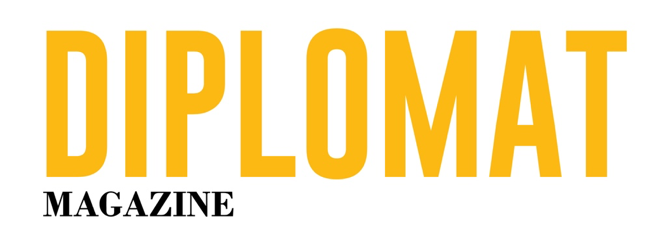By Ján Figeľ
The summit of the US and Russian presidents in Alaska is an extraordinary opportunity to launch a renewed and productive dialogue between the main powers of the Euro-Atlantic area. It can lead to the end of damaging development and long confrontation: the bloody war in Ukraine since 2022 and the (second) Cold War since 2014.
For the Fathers of a united Europe after World War II, peace action was determined by a careful analysis of realities, awareness of duties and the search for possibilities. At the same time, they had the courage, creativity and perseverance to implement the necessary actions on the basis of proven principles and values.
The European integration process has stagnated in the last decade, or even reversed (Brexit). If we want to succeed with the peace plan for the whole of Europe, we need to perceive the whole and complex reality of Europe and its neighborhood. Now is the time.
For reminder and inspiration, let us recall the words of three important Europeans.
Robert Schuman, French post-war prime minister and statesman: “We must construct Europe not in the interest of the free peoples alone, but also to be able to welcome in it the peoples of the East, who freed from the repression that they have been subject to until the present, will ask us for their adhesion and for our moral support. … We consider as integrating part of a living Europe all those who desire to rejoin us in a reconstituted Community.”
German Chancellor Konrad Adenauer in his message on Security and Peace for All in 1953 spoke about two major actions:
- In order to meet a possibly existing Soviet security requirement the regional alliance of the European Community, after being joined to the NATO, can be brought into a contractual relationship to the regional alliances of the East Bloc within the scope of an all-embracing structure… including military side of the system.
- As economic cooperation and political security are interdependent, the funds becoming available by a general control of armaments can be utilized to increase the international exchange of goods and raise the standard of living of all nations.
Charles de Gaulle, President of France, in his famous speech in 1959 declared: “Yes, it is Europe, from the Atlantic to the Urals, it is Europe, all of Europe, which will decide the fate of the world!”
Were all these personalities wrong? These visions were openly communicated during the hard confrontation years of the Cold War. It must be much easier to formulate a true road to peace, stability and security for all nations after collapse of communist regimes in Europe.
But there are no statesmen in Europe who experienced WWII. Regrettably, today many lack foresight, generational thinking and a comprehensive geopolitical action. The US and EU leaders were unable to secure peace after the victory in the Cold War (1989-91) and build pan-European unity for the benefit of peace and security for all. Equally, they were unable to prevent the conflict inside Ukraine in 2014, nor to resolve it effectively (Minsk Agreements I, II). This helped to get this multinational country with disputed leadership into a fateful confrontation. In 2022 Russia invaded Ukraine and started the war.
There is a narrow path from this war in Ukraine to peace, which includes several critical conditions and important goals:
1. The sequence of ceasefire – peace agreement – stability – security – reconstruction – prosperity is an invitation for fair negotiations and compromises between Ukraine and Russia starting with a ceasefire, but valid also other states (the USA and Europe), in order to guarantee the agreed steps and conditions.
2. Displaced populations and refugees from war-affected territories must be given a respected right to return.
3. If the destructed territories are to be restored soon and successfully, they cannot remain isolated and internationally unrecognized. A reasonable transition period (7-10 years) with international supervision and local self-government and subsequent regional plebiscites under international control (with the participation of the UA and the RF) on the basis of the right of the population to self-determination will decide on their future constitutional status or integration with international recognition.
4. The destroyed territories need reconstruction with great financial potential. A common fund will be established for the reconstruction of all war-ravaged territories and infrastructure, which will operate over the same period of time.
5. Creation of conditions and instruments of common markets for strategic resources and commodities (energy and energy infrastructure, natural raw materials, information technologies, intellectual property), initiated by the US and RF and open to all free nations can be a long-term instrument for security and prosperity of all.
Under the original Schuman Plan for Europe from 1950 the participating states live in peace, security and prosperity. Now we need to invent and implement the Schuman Plan 2.0. Original principles are the same and equally viable today. A potential Big Deal adopted by the USA, RF, Ukraine and the EU with fair and acceptable conditions for ending the war in Ukraine, but also for security, mutual cooperation and prosperity can build a new West-East or Northern Hemisphere Community. Practically it may represent an unprecedented Community from Alaska to Kamchatka through Europe and Central Asia.
With realism, this can be achieved in the spirit and legacy of the successful Fathers of Europe. Will there be the courage and determination, the creative ability and perseverance to realize this positive vision and actions, based on proven principles and values?
About the author
Ján Figeľ ]is a Chairman of the Scientific Committee of the Clementy Foundation´s Chair for the Ven. Schuman´s Legacy in the Pontifical Academy of Sciences in the Vatican, the former EU Commissioner and Deputy Prime Minister of Slovakia, the founder of the EIT (European Institute of Innovation and Technology), the first Special Envoy for Freedom of Religion or Belief outside the EU, and current President of FOREF (www.janfigel.sk)



